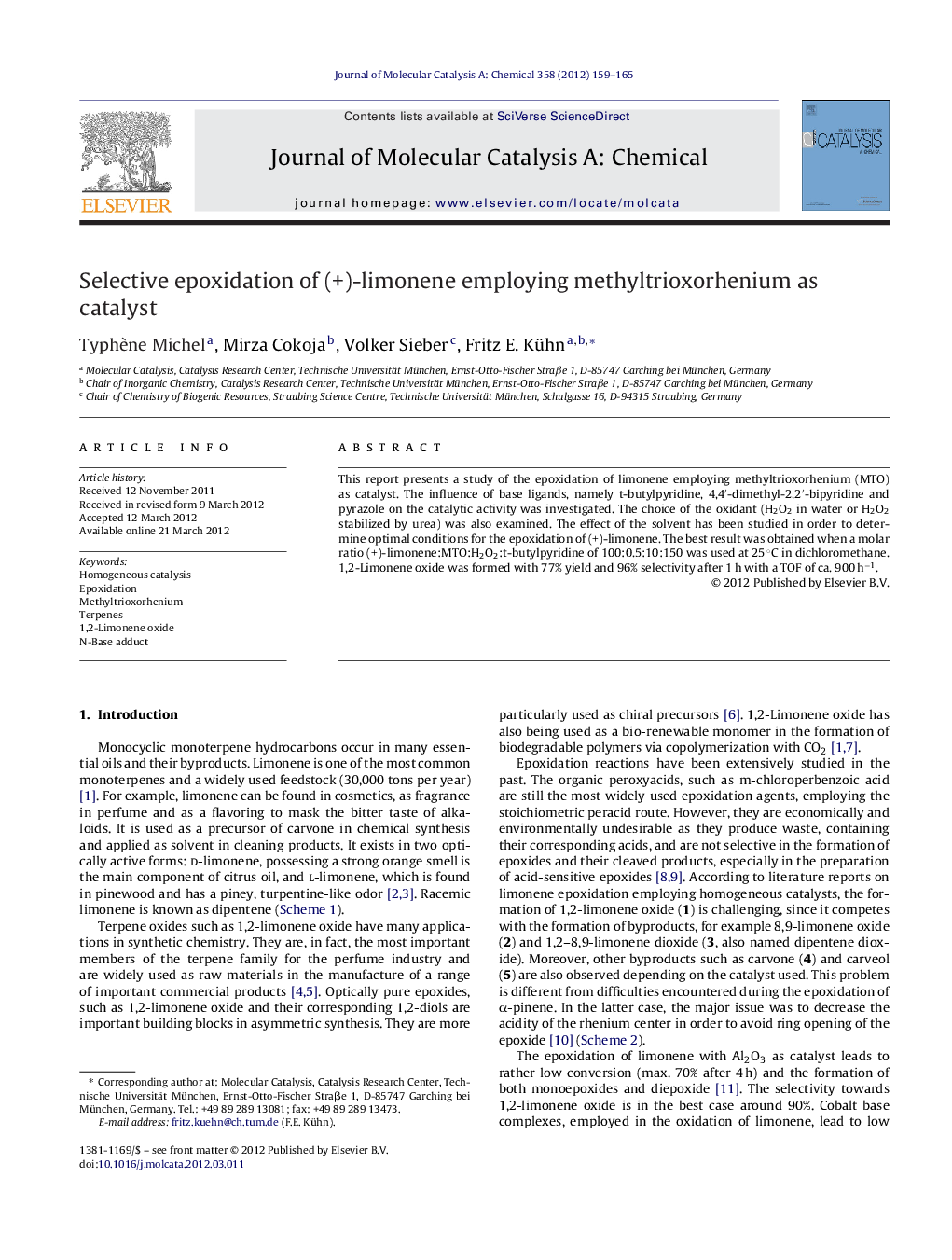| Article ID | Journal | Published Year | Pages | File Type |
|---|---|---|---|---|
| 66262 | Journal of Molecular Catalysis A: Chemical | 2012 | 7 Pages |
This report presents a study of the epoxidation of limonene employing methyltrioxorhenium (MTO) as catalyst. The influence of base ligands, namely t-butylpyridine, 4,4′-dimethyl-2,2′-bipyridine and pyrazole on the catalytic activity was investigated. The choice of the oxidant (H2O2 in water or H2O2 stabilized by urea) was also examined. The effect of the solvent has been studied in order to determine optimal conditions for the epoxidation of (+)-limonene. The best result was obtained when a molar ratio (+)-limonene:MTO:H2O2:t-butylpyridine of 100:0.5:10:150 was used at 25 °C in dichloromethane. 1,2-Limonene oxide was formed with 77% yield and 96% selectivity after 1 h with a TOF of ca. 900 h−1.
Graphical abstractFigure optionsDownload full-size imageDownload high-quality image (147 K)Download as PowerPoint slideHighlights► Methyltrioxorhenium as epoxidation catalyst. ► Catalytic epoxidation of (+)-limonene. ► Good balance between catalyst activity and mild condition to avoid the formation of byproduct. ► Product formation highly depends on the reaction conditions. ► Optimal condition leads to 96% selectivity, 77% yield in 1 h.
